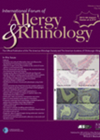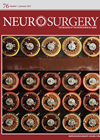
Journal Reviews
Measuring is understanding: an unsupervised PROM clustering of CRS patients
It has been clear for quite some years, at least for anyone dealing daily with chronic rhinosinusitis (CRS) patients, that CRS is an ‘umbrella’ diagnosis. There are significant differences between patients, including different demographic data, different endoscopic and radiographic images,...
Choosing Wisely!
This article focuses on the prickly topic of healthcare costs and specifically on reducing spending on neuroimaging for headaches. Epidemiological studies indicate that the prevalence of lifetime headaches is 93 to 99% and accounts for 1.5% of all primary care...







